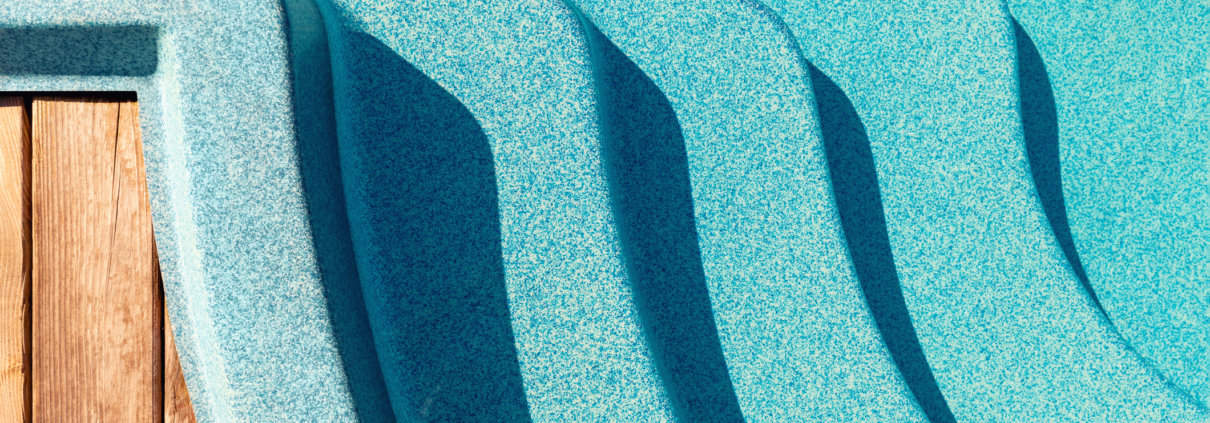How Does Your Pool Surface Affect How Often You Need Pool Resurfacing?
While having a swimming pool in your outdoor space is excellent for entertaining guests and having family time, it’s important to remember that your pool is an investment in your property and requires regular maintenance and upkeep. Even the most durable pool surfaces are not exempt from regular wear and tear and exposure to the elements. Homeowners who stay on top of pool maintenance will have a lovely outdoor oasis and will also help to maximize their overall property investment.
When it comes to pool resurfacing, the main question is how often your pool needs to be resurfaced to maintain its value and functionality. While there is no concrete timeline for this, by knowing the basics and being proactive, you can stay a step ahead and ensure the aesthetics and longevity of your Southern California swimming pool. Be sure to consider the following guidelines when determining the timeframe in which you need to resurface your pool.
How Often Should Your Pool Need Resurfacing?
As a rule of thumb, the typical pool needs to be resurfaced every nine to 10 years, though a variety of different factors can influence this timetable. Exposure to the elements, the chemicals used and the overall maintenance of the pool all contribute to when your pool will require resurfacing. In most cases, the pool material is the driving factor for pool resurfacing. Here is roughly what you can expect based on the most common materials used for inground pools.
Do Vinyl Liners Need To Be Resurfaced?
Vinyl liners do not actually need to be resurfaced; however, they do occasionally need to be replaced. A vinyl pool liner will typically last between five and nine years before it needs to be replaced. This range is extensive due to the influence of typical environmental conditions, including exposure to UV rays, chemicals used and overall upkeep.
If you’re expecting to use your inground pool for decades to come, consider converting from a vinyl liner to a fiberglass pool. This option is optimal for those who frequently utilize their outdoor pool. For the most part, vinyl liners should be closely inspected after the four or five-year mark for signs of wear and tear. While replacing vinyl liners tends to be straightforward and can be completed by the homeowner, professional assistance is highly recommended.
Resurfacing Fiberglass
While the gelcoat utilized in a fiberglass pool is known for being extremely durable, it is not indestructible. Like any other surface, chemicals and UV rays can degrade it over time, making it important to keep an eye on it as time passes.
While fiberglass pools generally last decades, it depends on the context, and there is a significant range when it comes to pool resurfacing. If your pool has been exposed to the sunshine and/or has received basic chemical treatments, it’s important to regularly inspect your fiberglass to see if it’s time for pool resurfacing.
To get a better sense of how well your fiberglass pool is holding up, look for signs of discoloration, cracking, blistering or anything else that signifies wear and tear. It’s also a good idea to fully inspect a fiberglass pool after purchasing a home, especially if the information on the pool is scarce. If you know that a fiberglass pool has been resurfaced within the last decade, you’re most likely good for now, although it’s always a good idea to evaluate the pool for potential signs of damage.
Resurfacing Concrete Pools
There are two varieties of concrete pools: those with a plaster surface, and those that use tile/stone to complete the look. The most common inground pool combination is plaster with concrete, and for good reason – it is super customizable and built with longevity in mind. Once it hits the 10-year mark, however, it is likely time to look closer for any plaster damage that might indicate it’s time for resurfacing.
Additionally, many pool owners also decide to go with a tile or stone outer surface to enhance the look and feel of their concrete pool. While pool tile and stone always complement a pool’s aesthetic, they also tend to last an average of eight to 12 years before they need resurfacing or repair.
As always, the expected timeframe is only a starting point. As a pool owner, you should never downplay or ignore potential signs of damage simply because you weren’t expecting to resurface the pool yet. If you think it’s too early for a complete pool resurfacing but see some minor damage, you may be able to have the issue repaired for a fraction of the cost of a full resurfacing.
If you need to resurface your Southern California pool, get in touch with the pool restoration experts at So Cal Pool Plaster. As the leader in the pool construction and restoration industry for over 15 years, we know a thing or two when it comes to luxury pool replastering, resurfacing and construction. From opulent pool coping and pool tiles to special features like waterfalls and jets, we are proud to offer a variety of options to customize your pool and transform it into a true outdoor oasis. Call us today at 714-617-8182 to schedule your free consultation, or complete our contact form.




